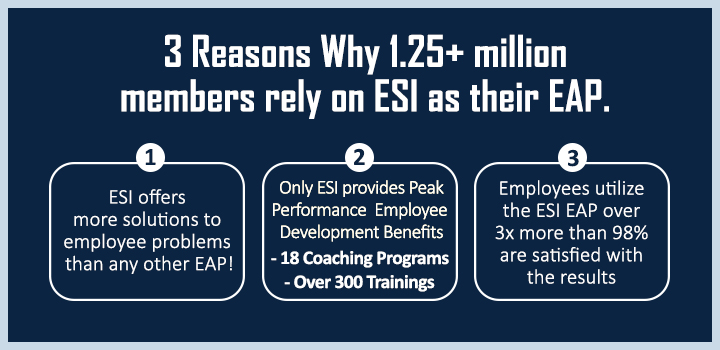In this HR News Roundup, learn about the issues keeping HR managers up at night; dealing with grief in the workplace; HR news compliance issues and a few items from the lighter side.
What’s keeping HR up at night in 2020?
Carol Patton, Human Resource Executive
Retaining key talent is HR’s chief concern, according to a survey of more than 300 HR executives representing mid- to large-size employers across multiple industries conducted by Human Resource Executive® between December 2019 and January 2020. Rad about that and other top-of-mind HR issues, including: developing leaders & succession planning, improving employee experience, driving culture change and driving innovation.
Employers focusing on training to retain employees
Marlene Satter, BenefitsPro
Although pay raises were the top retention strategy for 61% of employers, only a hair less — 59% — said they’d be focusing on offering employees training. But, according to Wendy Brown, director at PayScale, it’s not all that simple.
The report cites specific training goals among employees, such as the big winner — management and leadership training — chosen by 32% of respondents as their top choice for an employee professional development program. The next most popular among workers were professional certification (30%) and technical skills training (17%).
LinkedIn Now Offers the Ability to Interview Candidates
HR Daily Advisor
If you’ve been using LinkedIn as your main source of applicant tracking—through its new applicant tracking System (ATS), Talent Hub—a new feature will help you reduce your interviewing process on top of all the added benefits Talent Hub has to offer. … Talview’s live interviewing capabilities are now integrated into the LinkedIn Talent Hub experience. Talent Hub allows organizations to source, manage, and hire candidates from one place, and now you’ll easily be able to interview the best fit candidates all from one platform.
7 ways to deal with grief at work
Erica Sweeney, Fast Company
While 88% of employers offer bereavement leave, according to the Society for Human Resource Management, it averages about three days. That amount can vary greatly, however, since no federal requirements for bereavement leave exist. The Family and Medical Leave Act doesn’t specifically cover it, and the Fair Labor Standards Act doesn’t require paid time off to attend funerals.
Because of this, many people have no choice but to return to their workplace while still in the early stages of mourning. While some appreciate the distraction that work can provide, the emotional burden can also create uncomfortable workplace interactions.
Related: Dealing with the death of a colleague in the workplace
The sudden death of a coworker is often a jarring, upsetting experience. As the workforce ages, it’s likely to only become more commonplace.
HR News: Compliance Corner
- The Dos and Don’ts of firing an employee
- Here are Ten Problems with Your FMLA Policy and Suggestions on How You Fix Them
- Do we have to allow dogs in our workplace? Maybe. Maybe not.
- What small business owners should know about wrongful termination lawsuits
- Determining essential job functions
- Employment-at-Will does not mean what you think it means
- Document retention in hiring
- USCIS releases a new Form I-9
- Top 10 issues affecting employers in 2020
- Drug testing in the ’20s: What employers should and shouldn’t do

More HR News: Quick takes
- Who and where will workforce automation hit the hardest?
- What employers are getting wrong—and right—about benefits communications
- How many of your employees live paycheck to paycheck?
- Tax scam season: Be on high alert for these fraud schemes
- Quick Strategies to Energize One-On-Ones
- How costs for obesity in workplace vary by industry
- Employers need to do more to help breastfeeding moms: Survey
- Loneliness in America is at an all-time high. Long working hours and sad desk lunches may be to blame.
- Guns in the workplace? Developing a balanced risk management policy
- Hollywood embraces recovery: How industry insiders get and stay sober
- Why we feel anxious
- 100 useful performance review phrases
- How morning and afternoon people can get along at work
HR News: From the lighter side……
- The daily routine of famous creative people – Discover how some of the world’s most original artists, writers and musicians structured their day, based on ‘Daily Rituals’ by Mason Currey. Filter the different categories by toggling on or off, and hover over the colored bars to learn more about the daily routines.
- This item will have particular interest to our readers in the healthcare/hospital sectors: 68 laws of the ER
- Merriam Webster created “a bunch of usage limericks” about word errors, confusions and pet peeves. In this sample, they weigh in on the increasingly common usage of “their:”
If you’re a stickler for grammar, prepare
to be irked by the singular their
Tho it seems a mistake
The position we take
Is if the word is in use we don’t care
- This fun clip illustrates the challenges of getting multiple generations to work successfully with each other and to play to each generation’s respective strengths.
Recent HR Web Cafe blog posts
- Coronavirus (COVID-19): What employers need to know
- Employment Law issues for 2020: Are you compliant?
- HR trends and workplace issues: a look ahead, a look back

